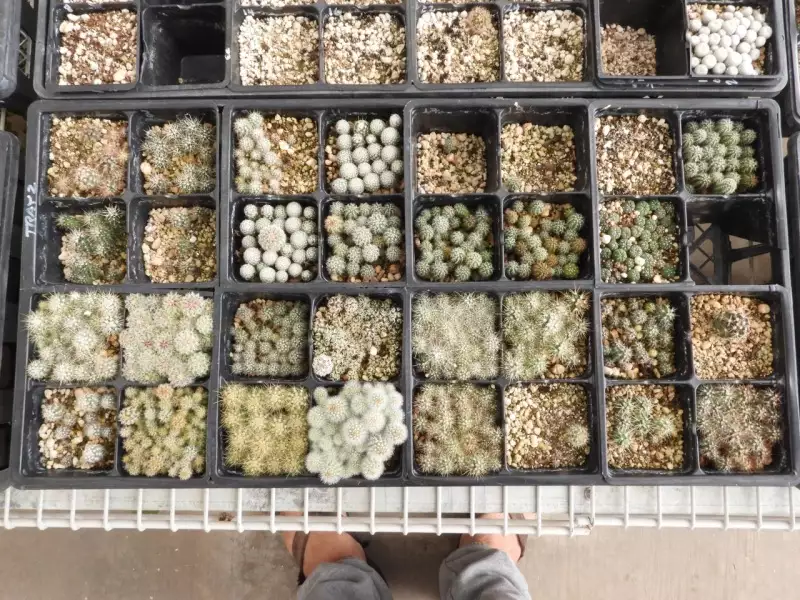
|
This is a picture of an afterthought. I sowed many seeds in January 2020, and germination and growth proceeded normally.
(This isn't quite true; I had fantastically good germination and success in growing-on the resulting seedlings. I can't remember anything like this in my 50 years of growing cacti from seeds. In January 2020, I sowed a total of 320 cells of 100 seeds each for a total of 32,000 seeds.)
After about 7 months, the various species filled their cells to overflowing, so I had to transplant them, I thought. The next step, when I do transplant after the initial seeding, is to have each biggish seedling go into one of the cells in a 288 cell 20X10 tray. I did so. Out of curiosity (it's a good thing I'm not a cat?) I did not toss all the many rejects from this process. (They were the usual runts and etiolates.) I picked out the best looking of the lot, and tossed the rest. The result of carefully replanting these "reject" seedlings back into the cells they came out of is here pictured. They look great. To my trained eye, there is no hint of runt or etiolate in these plants. I actually wrote in my notes (I can't help it - science training) how many of these seedlings I planted back into the origin cells. I believe my notes. The bottom line is that every one of the "reject" replants survived in all the cells. They not only survived, but survived splendidly. There is no hint of their previously bedraggled look. This is something totally unexpected! And, the point is, the original transplants that were done while rejecting the seedlings here illustrated - the robust seedlings almost all died. I did have a survival rate of around 15%, but why did I lose 85% of the then-robust plants, and have a 100% survival of the rejects? Maybe my judgment of "best plants for transplanting" stinks? For what it's worth, it is common to have this experience of losing all or nearly all seedlings transplanted the first time from their origin cells. All of us seed growers talk about it. Even Mesa Garden, professionals at germinating and growing cacti from seeds for their business of selling the transplants, has experienced this puzzle with no more understanding of it than us amateurs.
(There is a row of cells above Tray 2 that are empty, save the end cell. These are seedlings of Epithelantha micromeris. And, at the bottom of the picture, the sweat pants plus feet in flip-flops are all mine.)